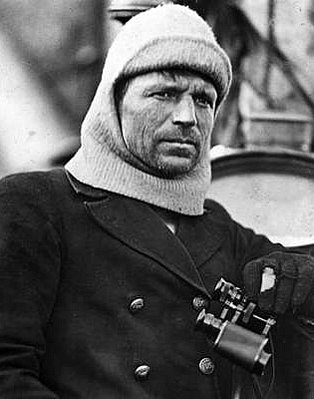New Zealand was one of the very first signatory nations of the Antarctic Treaty in 1960 and is a consultative party with voting rights able to make decisions about Antarctica.
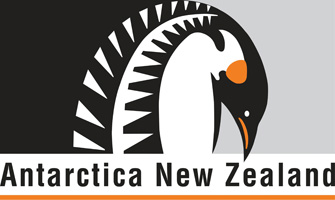 New
Zealand in Antarctica
New
Zealand in Antarctica
A History
and Activity
New Zealand has a long history in Antarctica. Official involvement was slow, though as an island nation and frequently used for departure ports for many expeditions to Antarctica from the earliest days of exploration, many New Zealanders joined ships as crew on the way south. New Zealand was involved in the International Geophysical Year, IGY1957-58, and has a modern scientific base going back over 65 years and is currently at the forefront of modern research in Antarctica.
Current activity
Antarctica New Zealand - 1961 - present. A Crown Entity that has the responsibility for the New Zealand Government's activities in Antarctica and the Southern Ocean.
|
Research Station and position |
Summer staff | Winter staff | Occupied | Use |
|
Scott Base, Ross
Island 77°51.00'S, 166°45.77'E |
85 | 10 | 1957 - present | Year round |
Scientific research is carried out by scientists mainly from New Zealand Universities and Crown Research Institutes.
Antarctica New Zealand
is based in Christchurch.
Website:
www.antarcticanz.govt.nz
|
Job opportunities
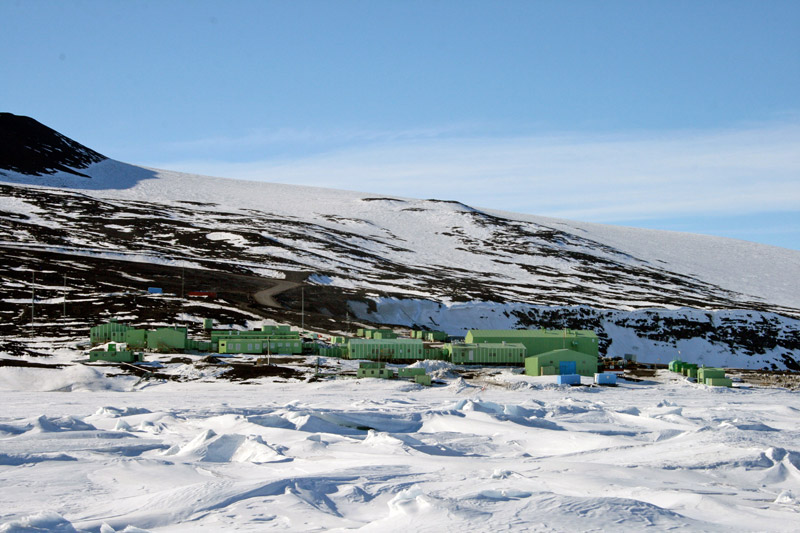
New Zealand's Scott Base from the sea ice
off the shore of Ross Island in Antarctica, 2008
Heroic Age Expeditions 1900-1922
There were no New Zealand organized or funded expeditions to Antarctica during the Heroic Age, though New Zealanders took part in a number of expeditions often playing significant roles.

![]() 1907-09 - Shackleton - Nimrod
-
British Antarctic Expedition
1907-09 - Shackleton - Nimrod
-
British Antarctic Expedition
The first expedition led by Ernest Shackleton to the Ross Sea area of Antarctica with an attempt on the South Pole coming to within 97 miles.
McGillion, Michael
Thomas - trimmer - Born 1885, Dunedin,
NZ
Meyrick, M.R. - trimmer - Born 1880,
Lyttleton, NZ
Partridge, John - fireman
- Born 1885, Lyttleton, NZ
Rooney,
G. - AB - Born 1883, Wellington, NZ
Vaughan,
M. - fireman - Born 1881, Lyttleton NZ
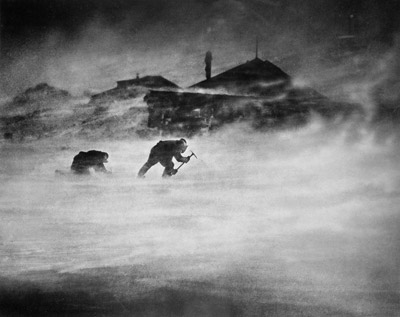
![]() 1911-14 - Mawson - Aurora -
Australasian
Antarctic Expedition
1911-14 - Mawson - Aurora -
Australasian
Antarctic Expedition
Harold Hamilton
- Biologist - Single, born in Napier,
New Zealand. Graduate of the Otago University. Besides being
employed on the New Zealand Geological Survey, he acted as Entomological
Collector to the Dominion Museum at Wellington. A member of
the Macquarie Island Party, of which he was the Biologist for
two years, H. Hamilton visited the Antarctic during the final
cruise of the `Aurora' in the summer of 1913-1914.
Dr. Leslie H. Whetter - Surgeon - A graduate of Otago University, New Zealand, joined the Expedition as Surgeon, acting in that capacity at the Main Base (Adelie Land) during 1912. He accompanied a sledging party which explored to the westward of Winter Quarters.
A. J. Sawyer - Wireless Operator - Single, was born in New Zealand. Having had considerable experience in wireless telegraphy, he joined the Expedition as an operator from the Australasian Wireless Company. At the Macquarie Island Station he was chief wireless until August 1913, when on account of illness he returned to New Zealand.
![]() Captain - 1914-17 - Shackleton
- Endurance -
British Trans-Antarctica Expedition
Captain - 1914-17 - Shackleton
- Endurance -
British Trans-Antarctica Expedition
![]() Hydrography,
sailing master - 1921 - 1922 - Quest
- Shackleton -
Shackleton-Rowett
Expedition
Hydrography,
sailing master - 1921 - 1922 - Quest
- Shackleton -
Shackleton-Rowett
Expedition
Eccentric and indispensable to the Endurance expedition, Worsley's uncanny navigational skills could hit small islands at hundreds of miles range with only occasional readings, the minimum of instruments and in the worst possible conditions.
Exploration Scientific Bases and Research after 1922
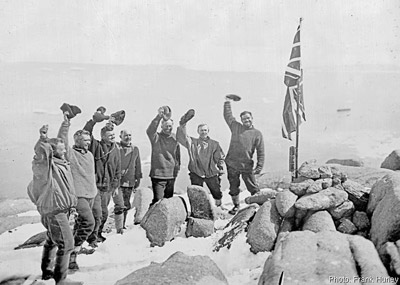
![]()
![]()
![]() 1929-31
- British, Australian and New Zealand Antarctic Research Expedition
- BANZARE
1929-31
- British, Australian and New Zealand Antarctic Research Expedition
- BANZARE
The French had in 1924 laid claim to Terre Adelie or Adelie Land in the sector directly south of Australia. What became popularly known as BANZARE was an attempt by (now Sir) Douglas Mawson and others in Australia to encourage the government to file a similar claim. After a meeting in London, a joint expedition was proposed, partially privately funded, it used the RRS Discovery and had a small floatplane. The expedition didn't overwinter in Antarctica but consisted of two summer cruises in 1929-30 and 1930-31, surveying and mapping by ship and from the air. Land was claimed as British territory. It led to the establishment of the Australian Antarctic Territory.
![]() 1941-1945 - New Zealand Cape Expeditions
1941-1945 - New Zealand Cape Expeditions
Wartime operations to check for enemy activity around New Zealand's southern islands. It was thought that German raiders might be using harbours on some of the sub-Antarctic islands. Small parties of observers were placed in small hidden huts in the Aukland Islands and Campbell Island to watch for shipping and make meteorological observations. No enemy shipping was observed. Meteorological observations at Campbell Island were continued until 1995 and scientific reports by naturalists were published.
![]()
![]()
![]()
![]() 1955-1958
- Commonwealth Trans-Antarctic Expedition
1955-1958
- Commonwealth Trans-Antarctic Expedition
Funded by the governments of Britain, Australia, New Zealand
and South Africa, this was an attempt to do what Shackleton
had set out to do in 1914, to cross the Antarctic Continent
from sea to sea via the South Pole. Led by the British Vivian
Fuchs from the Weddell Sea and New Zealander Edmund Hilary from
the Ross Sea. Hilary arrived at the Pole on the 4th of January
1958, Fuchs on the 19th, they both reached the Ross Sea again
on the 2nd of March.
videos of the expedition
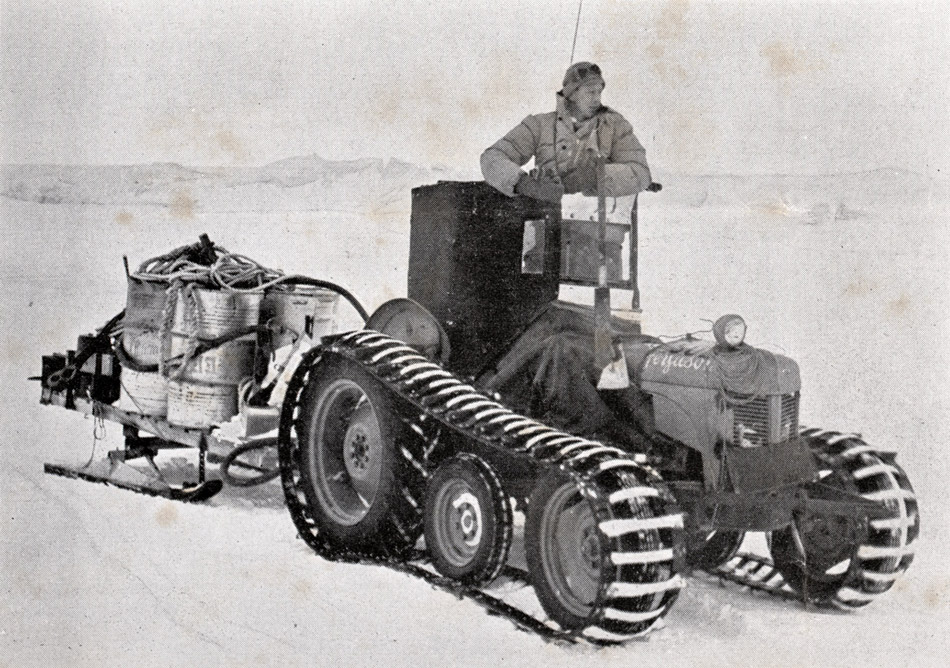 A tractor towing a load
of tractor fuel at Scott Base during the Commonwealth Trans-Antarctic
Expedition, 1957
A tractor towing a load
of tractor fuel at Scott Base during the Commonwealth Trans-Antarctic
Expedition, 1957
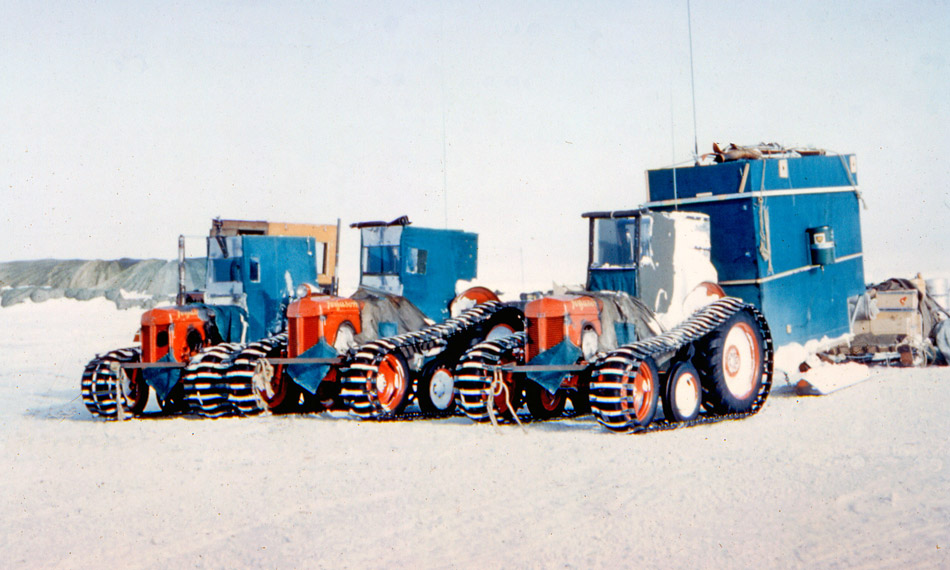 Tractors, 1957 for the
Trans-Antarctic Expedition
Tractors, 1957 for the
Trans-Antarctic Expedition
Territorial Claims
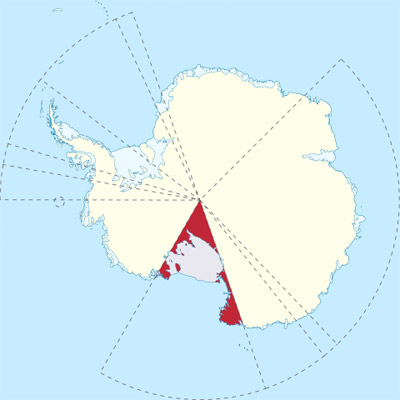 There
is a historical claim of the Ross Dependency dating back to
1923 when the Governor-General of New Zealand was appointed
as the Governor of the Ross Dependency by an Imperial Order
in Council made in London.
There
is a historical claim of the Ross Dependency dating back to
1923 when the Governor-General of New Zealand was appointed
as the Governor of the Ross Dependency by an Imperial Order
in Council made in London.The region is that area of Antarctica between 150°W and 160°E and extending to the South Pole.
New Zealand is one of seven nations that made a claim to land in Antarctica before the Antarctic Treaty of 1961, these being Argentina, Chile, the United Kingdom, France, Australia, New Zealand and Norway. The UK, France, Australia, New Zealand and Norway all recognize each other's claims, these are non-overlapping.
The Antarctic Treaty, Article IV § 2 states: "No acts or activities taking place while the present Treaty is in force shall constitute a basis for asserting, supporting or denying a claim to territorial sovereignty in Antarctica. No new claim, or enlargement of an existing claim, to territorial sovereignty shall be asserted while the present Treaty is in force."
So the Antarctic Treaty does not suspend or defer existing claims, though it does state that:
- No activities occurring after 1961 can be the basis of a territorial claim.
- No new claim can be made.
- No claim can be enlarged.
Practically though territorial claims have been effectively suspended since 1961.
Picture credits: Scott Base picture used courtesy Tas50 under CC BY 3.0 licence / Territorial claim image used courtesy TUBS, license via Wikimedia Commons

